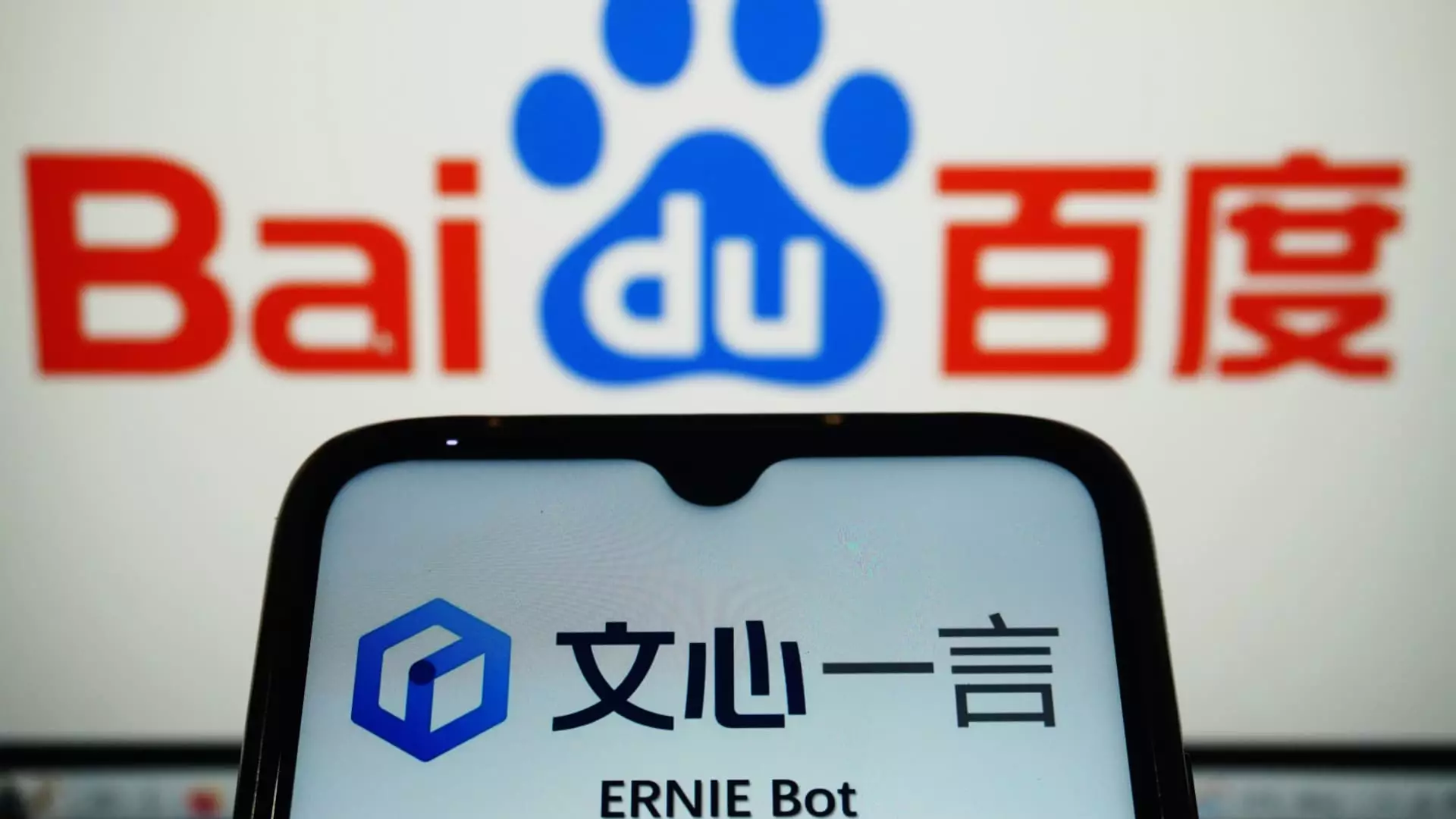In the fast-paced arena of technology stocks, fluctuations can often reveal more than just market trends—sometimes, they reflect a deeper sentiment regarding a company’s prospects. Recently, shares of Baidu, China’s renowned tech giant, leaped by an astonishing 10.7% following the announcement of two new AI models. While the stock market often reacts swiftly, this surge signifies a potential recalibration of investor confidence in Baidu’s ability to compete in the increasingly crowded AI landscape.
However, the stock rise can also be interpreted as a potentially alarmist reaction—a “delayed response,” according to Morningstar’s Kai Wang. What lies beneath this rise? It appears to be a complex mixture of the anticipation surrounding Baidu’s innovations and the stark reality of fierce competition from nimble rivals like DeepSeek. Investors should tread carefully; optimism can cloud judgment when the underlying fundamentals of a company are still evolving.
AI Innovations and Competitive Dynamics
Baidu’s recent launch of its enhanced “Ernie” model and a new reasoning model, touted to rival DeepSeek’s R1, represents both an innovative leap and a tactical play to reclaim its foothold in the AI sector. In a market where agility and performance are keys to survival, Baidu is attempting to exercise a level of performance comparable to existing competitors while touting cost-effectiveness—both extremely crucial in today’s economically cautious environment.
While Baidu claims its ERNIE X1 can deliver results on par with DeepSeek at half the cost, the skepticism surrounding such assertions is palpable. The first rule of competition in AI is that claims of superiority are easily made but as easily challenged. Will Baidu’s offerings genuinely hold up under scrutiny, or are investors simply willing to overlook potential pitfalls for a glimmer of hope?
The Shift Toward Open Source: A Game-Changer?
Perhaps the most notable shift in Baidu’s strategy is the decision to open source its AI models. This dramatic pivot represents a departure from a traditional focus on proprietary technology—an approach that has often left even the most advanced models stagnant and hoarded within the vaults of their creators. By releasing its models to the public domain, Baidu is taking a significant gamble, relying on community collaboration to enhance its offerings further and bolster its standing within the AI community.
This could indeed be a masterstroke; open sourcing invites developers to contribute and modify the codes, potentially leading to unexpected innovations that could bolster Baidu’s market share. No longer owning the narrative alone could also create a more democratized dialogue around AI development, fostering a collaborative spirit that ultimately benefits the technology community as a whole.
However, this strategy also raises concerns about quality control and reliability. With multiple contributors, will Baidu’s brand remain intact, or could its reputation suffer from the mistakes of independent developers? There’s a fine line between collaboration and chaos, and it’s vital for Baidu’s leadership to navigate this area cautiously.
Facing Fierce Competition
Baidu’s challenge isn’t just about launching new models; it involves contending with aggressive competitors like DeepSeek, which has swiftly ascended in the AI hierarchy by releasing an open-source model that competes fiercely on performance and cost. This scenario invites questions about the implications for market dominance and innovation within China’s tech sector.
Furthermore, alternative tech giants such as Alibaba and Bytedance are not sitting idle. Each company is vying for its slice of the AI pie, and their varied strategies add additional layers of complexity to the competition. If Baidu is to remain relevant, it cannot merely replicate successful models but must also innovate uniquely—creating differentiators that consumers desires.
What Lies Ahead?
The future seems unpredictable for Baidu, wrapped in both problems and possibilities. As it battles challenges internally and externally, the eventual success of its new AI models hinges on tangible performance metrics and user satisfaction. If Baidu can align its innovations with market needs while maintaining competitive advantages, it may very well experience sustainable growth.
On the flip side, if self-doubt casts a shadow over its ambitious plans, Baidu might find itself locked in a perpetual game of catch-up. The marketplace will undoubtedly be watching—keenly deciphering whether Baidu’s assertions will materialize into reality or merely echo the hollow promises of a past era.


Leave a Reply